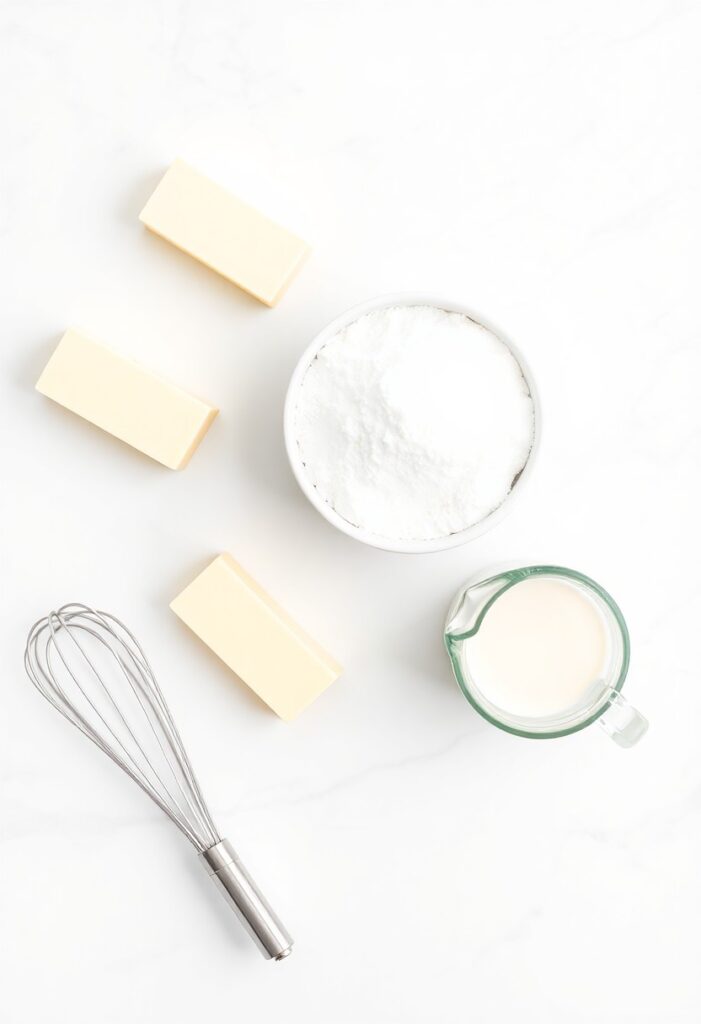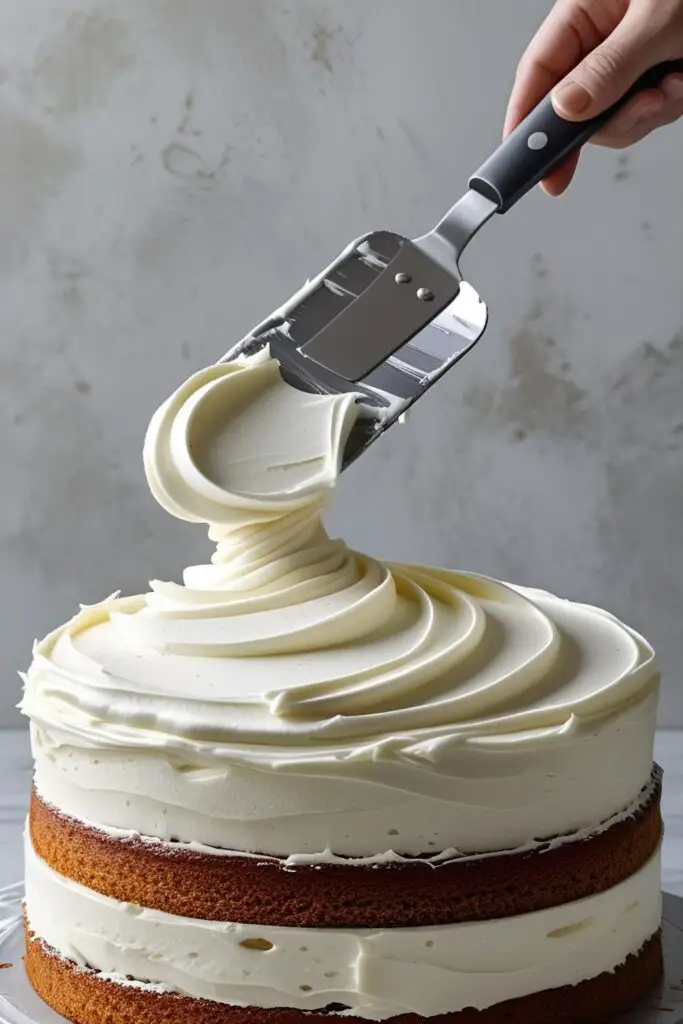How to Make Cake Cream (aka The Best Buttercream Frosting of Your Life)
We need to talk about bad frosting. You know what I’m talking about—that gritty, overly sweet stuff from a can, or that homemade attempt that turned into a soupy, weeping mess. A bad frosting can ruin a perfectly good cake, and frankly, that’s a tragedy we can no longer stand for. So today, we’re drawing a line in the powdered sugar. You’re about to learn how to make cake cream—a glorious, fluffy, perfectly sweet American buttercream—that is so good, you’ll want to eat it with a spoon. No, seriously. Find a spoon.
Why This Recipe Is Your New Baking BFF
So why is this the only frosting recipe you’ll ever need? First off, it’s foolproof. We’re using four basic ingredients that you probably already have. There are no complicated techniques, no candy thermometers, no praying to the baking gods. If you can cream butter, you can make this frosting.
Beyond its simplicity, this buttercream is the ultimate multi-tasker. It’s light and fluffy enough to spread effortlessly, yet stable enough to pipe beautiful decorations. It’s a blank canvas for any flavor you can dream up. And the taste? It’s pure, buttery, vanilla-kissed perfection that blows that store-bought stuff out of the water. This is the kind of frosting that gets you compliments. Prepare for your ego to be frosted, too.
Ingredients: The Fab Four
You are just four simple ingredients away from frosting nirvana. The key is using good quality ingredients!
- 1 cup (2 sticks) unsalted butter, softened to room temperature (This is NOT optional. More on this later.)
- 4 cups powdered sugar, sifted
- 1 teaspoon pure vanilla extract
- 2-4 tablespoons heavy cream or whole milk, at room temperature
- Pinch of salt (to balance the sweetness)
Key Substitutions:
- Vanilla Extract: Feel free to swap this for other extracts like almond, lemon, or peppermint to change the flavor profile.
- Butter: For the love of all that is holy, use real butter, not margarine. Margarine has a different fat and water content and will not give you the right consistency or flavor.
- Heavy Cream/Milk: Cream will give you a richer, creamier frosting. Milk works perfectly fine for a slightly lighter version.
Tools & Kitchen Gadgets Used: Your Arsenal of Fluffiness
While you could technically make this with a wooden spoon and a whole lot of elbow grease, I don’t recommend it unless you’re looking for an arm workout.
- Stand Mixer with the paddle attachment (the MVP) or an Electric Hand Mixer
- Large mixing bowl
- Sifter or fine-mesh sieve
- Spatula (for scraping the bowl)
- Measuring cups and spoons
Step-by-Step Instructions: Let’s Whip It Good
Ready to create some magic? This process is simple, but following the steps is key to achieving that perfect, fluffy texture.
- Cream the Butter: Place your softened, room temperature butter in the bowl of your stand mixer (or a large bowl if using a hand mixer). Beat the butter on medium-high speed for about 3-5 minutes. You want it to become very pale, light, and fluffy. Do not skip this step! This is where you whip air into the butter, which is the foundation of a light frosting. Scrape down the sides and bottom of the bowl.
- Sift and Add the Sugar: Turn the mixer down to low speed. Gradually add the sifted powdered sugar, one cup at a time, waiting for each addition to be mostly incorporated before adding the next. This prevents a sugar explosion all over your kitchen. Once all the sugar is in, your mixture will look thick and crumbly.
- Add the Flavor: Add the vanilla extract and the pinch of salt. Mix on low until just combined.
- Get It Creamy: With the mixer still on low, slowly drizzle in 2 tablespoons of the heavy cream or milk. Once it’s incorporated, turn the mixer speed up to medium-high.
- Whip It to Perfection: Now for the grand finale. Let the mixer run on medium-high for another 3-5 minutes. The frosting will transform, becoming incredibly light, fluffy, and smooth. Scrape the bowl down one last time. If the frosting seems too stiff, add another tablespoon of cream/milk at a time until you reach your desired consistency.
- Use Immediately or Store: Your perfect cake cream is now ready! You can use it to frost cakes, pipe onto cupcakes, or, you know, just eat it.
Calories & Nutritional Info (It’s Butter and Sugar, Folks)
Let’s not kid ourselves. This is a treat. A glorious, delicious, buttery treat.
- Serving Size: About 2 tablespoons
- Estimated Calories: Around 130-150 per serving
- Fat: Approximately 8g
- Carbohydrates: Roughly 15g
Nutritional Note: This frosting is made of fat and sugar. That’s why it’s delicious. Enjoy it on special occasions and don’t forget to brush your teeth. 🙂
Common Mistakes to Avoid: A Guide to Frosting Success
- Using Cold Butter: This is the #1 sin of buttercream making. Cold butter will not whip up properly and will leave you with a lumpy, dense frosting with visible butter chunks. Your butter must be softened to room temperature.
- Not Sifting the Powdered Sugar: If you want a silky-smooth, non-gritty frosting, you must sift your powdered sugar. It removes any little clumps and makes it incorporate into the butter seamlessly.
- Adding Too Much Liquid Too Fast: If you dump all the milk or cream in at once, you risk making your frosting too thin. Add it one tablespoon at a time at the end until you get the perfect consistency. It’s easier to thin a frosting than to thicken it.
- Not Beating It Long Enough: The secret to truly light and fluffy buttercream is air. You have to beat the butter at the beginning and then beat the finished frosting at the end for several minutes each. Don’t rush the process!
Variations & Customizations: Flavor Up Your Frosting
This vanilla buttercream is your delicious blank canvas. Get creative!
- Rich Chocolate Buttercream: Sift in 1/2 cup of unsweetened cocoa powder along with the powdered sugar. You may need an extra tablespoon or two of cream to get the right consistency.
- Zesty Lemon (or Orange) Buttercream: Swap the vanilla extract for 1 teaspoon of lemon extract and add 1-2 tablespoons of fresh lemon zest. This is incredible on vanilla or poppy seed cake.
- Smooth Coffee Buttercream: Dissolve 2 teaspoons of instant espresso powder in the 2 tablespoons of warm heavy cream before adding it to the frosting. It’s the perfect topping for chocolate or coffee-flavored cakes.
FAQ Section: Your Pressing Buttercream Questions, Answered
- Why is my buttercream gritty? You probably didn’t sift your powdered sugar! Those tiny clumps in the sugar won’t break down, leaving a sandy texture.
- How do I make my buttercream less sweet? American buttercream is inherently sweet. The best way to cut the sweetness is to add a generous pinch of salt (about 1/4 teaspoon). You can also use a high-quality, flavorful butter, which helps balance the sugar.
- Can I make this ahead of time? Yes! This frosting can be made up to a week in advance. Store it in an airtight container in the refrigerator. Before using, let it come to room temperature completely, then re-whip it with your mixer for a few minutes to bring it back to its fluffy glory.
- Can I freeze buttercream? Absolutely. Store it in an airtight container or a freezer bag for up to 3 months. Thaw it overnight in the refrigerator, then bring to room temperature and re-whip before using.
- My frosting is too thin! How do I fix it? The easiest way to thicken it is to add more sifted powdered sugar, about 1/4 cup at a time, until it reaches the right consistency. Chilling it in the fridge for 20-30 minutes can also help it firm up.
- My frosting is too thick! How do I fix it? This is an easy fix! Just add more heavy cream or milk, one teaspoon at a time, with the mixer on low speed until it’s perfectly spreadable.
- How much frosting does this recipe make? This recipe makes enough to generously frost a two-layer 8 or 9-inch cake, or about 24 cupcakes.
Final Thoughts
You are now officially a frosting master. You hold the power to create light, fluffy, perfectly sweet cake cream that will elevate your baked goods from “nice” to “unforgettable.” So go forth, break up with that canned frosting for good, and embrace the buttery, sugary magic of homemade. Your cakes (and your taste buds) will thank you.


